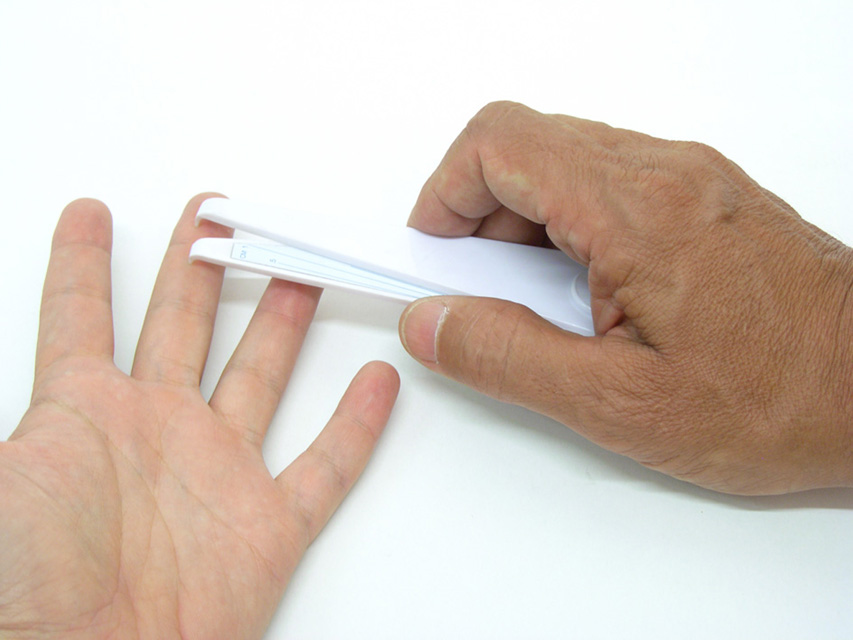31279
Two-point discrimination is the ability to recognise that
two nearby objects touching the skin are really two separate points, rather than
one.
Often tested with two sharp points during a neurological examination and
reflects how finely innervated an area of skin is. The two-point
discrimination is a reliable and widely used technique for
for determining tactile diaggnosis.
It depends on the patient's ability and/or willingness to subjectively report what he or she is feeling.
Two-point discrimination
the therapist uses a special caliper (or reshaped
paper clip). The therapist alternately (randomly) touches the
the patient with one or two points on the area being tested (e.g. finger, arm, leg, toe).
The patient is then asked to report what they felt (one or two
The smallest distance between two points that the patient has
can still distinguish as two separate stimuli and not as one. All
limb should be examined and compared side by side with the
side by side.
The smallest and densest sensory units in the areas
where the somatosensory cortical representation is greatest.
Normally, a person should be able to recognise
two points on the lips and finger pads, 2-4 mm apart,
8-15 mm on the palms and 30-40 mm on the shin or back
(assuming the dots are on approximately the same dermatome).
The posterior medial-post lemniscus pathway is responsible for the fine distinction between
the transmission of information involving a fine touch, and therefore the
damage to this pathway, bipoint discrimination may be impaired

